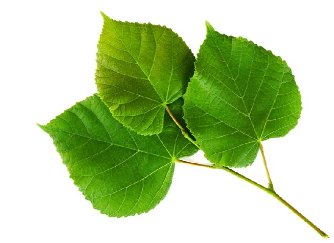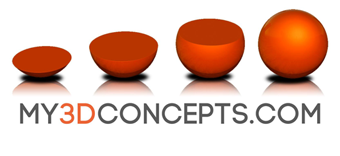 We believe in being eco-friendly, protecting the environment and creating while saving our natural resources. We believe that 3D technology is the next logical step in the manufacturing process, and that as part of our future it will help achieve the goal of producing and creating without destroying.
We believe in being eco-friendly, protecting the environment and creating while saving our natural resources. We believe that 3D technology is the next logical step in the manufacturing process, and that as part of our future it will help achieve the goal of producing and creating without destroying.
Being Eco-friendly is a way of life not a trend or buzz word. It exemplifies a philosophy and an action. Guiding the way we live, work and produce the items we need in a manner which is safe for our environment and in a way to conserve and protect the inhabitants and resources of our planet. Embracing eco-friendly initiatives creates an atmosphere of excitement, thrill and even euphoria especially as our society becomes more responsible and respectful towards its environment.
Is 3D printing Eco-friendly technology ?
The bad news.
The reality today does not allow the 3D printing technology to be fully Eco-friendly. Different researchers reveal that this technology uses large amounts of energy, larger than the amount used by milling and drilling machines. A research (Atkins Project) done at Loughborough University in the United Kingdom revealed that to produce the same object of the same weight, some 3D printing processes require 50 to 100 times more electrical energy than injection molding machine.
Another setback is the heavy reliance on plastic materials for the printing process. Plastic as a whole is not considered an Eco-friendly material. Studies show that industrial grade 3D printers have a substantial plastic byproduct left behind that in most cases is not suitable for reuse.
Furthermore a study led by Brent Stephens reveals that the secondhand printing fumes emitted when the plastic material is heated to high temperatures, hold toxic byproducts. Although the emissions levels were found somewhat normal – close to those of cooking indoors (Learn more about this at www.sciencedirect.com), the research demonstrates the need for further investigation.
The good news!
Observing the 3D printing Eco-friendly status in comparison to all the other manufacturing process, especially mass production, demonstrates the facts that the technology has far less of an impact on our environment in comparison to traditional manufacturing.
Moreover When we consider the entire product life cycle; extracting raw materials, assembly, refining, manufacturing, assembly, use, maintenance and end of the products life – 3D printers demonstrate considerable advantage over traditional machines in terms carbon footprint. In manufacturing, 3D printers generate less waste by using a little more than the amount of material necessary for the product eliminating completely the process of drilling, cutting, and milling. Another advantage of 3d printers is gained by reducing the refining and assembly stage and removing the storing necessity of the products before and during their sale which in terms of traditional manufacturing contributes to the overuse of resources.
Nevertheless as of today all manufacturing in its initial stage (extracting raw materials) and the disposal stage, involve heavy environment pollution. Many damaging effects are caused by the methods used to extract the raw materials are extracted and a large amount of energy is consumed in merely obtaining them raw materials.
According to many researchers, progressively more dangerous extraction methods are used to retrieve scarce oil resources for the production of plastic material so widely used today. Transportation, refining and manufacturing of products require additional energy, raw material waste and dumping toxic waste from the processes themselves into the air, earth and water. One the most evident and harmful consequence occurs at the completion of the life cycle when the products are discarded.
3D printing is striving to respond and correct all those problems inherent in a products life cycle. As mentioned previously, the technology is all about its unlimited potential, The potential in this technology allows us to say that 3D printing will continue developing and improving its continuous development and improvement in every aspect, especially in terms of being 3D printing Eco-friendly.
On-the-spot and on-demand 3D-printed manufacturing reduces overall energy waste and has smaller carbon footprint. The environmental costs of assembling, transporting, logistics, maintaining, storing are completely or nearly eliminated. The whole idea behind 3D printing is to produce affordable products in an efficient and effective manner so they are durable, lighter (especially advantageous when shipping) and have close to zero waste. The focus is on high quality, efficiency and low volume manufacturing. Computer generated designs will help reduce costs and improve energy and resource usage, by aiding in the design and early production stages of a new product, and by eliminating the need to store actual products. In addition, the products form, function, performance and durability will be greatly enhanced.
Another advantage is that the manufacturing would return to the hands of the local producers. It will reduce the shipping, air cargo volumes and the need for storage facilities and allow an emphasis on customization and high quality.
What about the heavy reliance of plastic for production and the related issues?
It is true that the heating and melting of plastic during the production stage emits fumes (Volatile Organic Carbon) and ultra fine particles harmful to the health. However the people behind the technology prove once again their incessant strive towards 3D printing Eco-friendly manufacturing by working on limiting and eliminating the risks through various filtration and ventilation solution incorporated in the machines themselves.
One such improvement is the use of corn-based biodegradable plastic (PLA) that not only has considerably less toxic emission risks but also proves a promising 3D printing Eco-friendly future in terms of the disposal stage of a product life cycle.
Furthermore 3D printers do rely on plastic, but only heavily for the desktop grade ones. The industrial grade 3D printers have the unlimited possibilities of variety of materials ranging from metal, ceramic to wood-like and glass-like materials. The prove for continuing aim for improvement in terms of materials comes from the fact that nowadays scientist are in the mist of printing human organs using cell-containing bio ink. The possibilities are endless.
Passion Creates Results
![]() We are passionate about creating and helping you produce new, improved and greener products through 3D technology which emphasizes on the use of recycled materials and focuses on reducing, managing and eliminating waste.
We are passionate about creating and helping you produce new, improved and greener products through 3D technology which emphasizes on the use of recycled materials and focuses on reducing, managing and eliminating waste.
We are excited about the potential for this technology to focus on materials for the printing process that would be Eco-friendly utilizing bio-degradable materials, bio-plastics, powders, resins, acrylates, wax and more. The end goal is to eliminate toxic materials and the negative effect on the environment.
According to various reports form the global management consulting firm of McKinsey, there are substantial trends of improvements in the 3D printing performance. In fact there is a “90% drop in the price of some low-end 3D printers and materials for home users compared to four years ago,” according to a recent article by Nilima Choudhury. See more at climatechangenews.com
Overall the potential and eco-friendly results of 3D printing technology are promising. This technology is believed to be revolution in manufacturing which is expected to get bigger, better and greener.


I’d forever want to be update on new articles
on this internet site, bookmarked!
Good article, needs more men tho